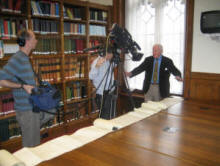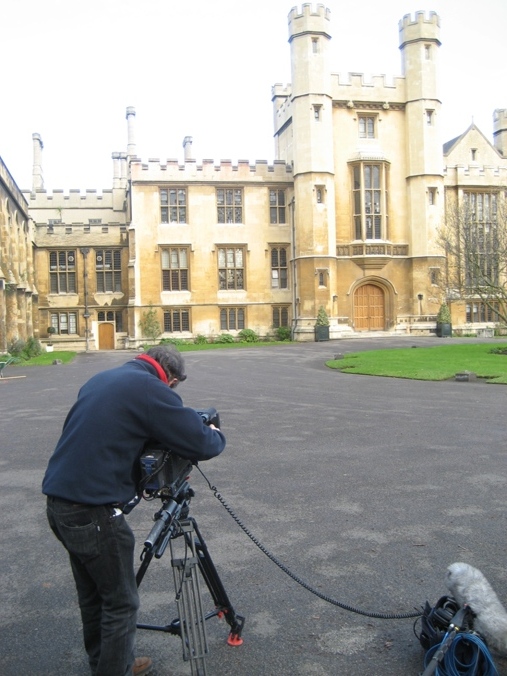The Making of the Film
|
|
| The
Better Hour filmmakers
gained access in the Archives
department of Parliament to the
original Royal Assent from 1807,
the document which ended the
slave trade. Handled with white
gloves by archive staff, the
1807 document was made from
goat's skin and amendments
stitched on top.. |
It
was important for us to film the
original documents which ended the slave
trade. Pictured here, in the House of Parliament
Archives Division, we filmed the
original British 1807 Act of Abolition
of the Slave Trade. Instead of printing,
the text was handwritten on
parchment using the skins of eight sheep
sewn together. The curled sections of parchment
are amendments that were stitched on top
of the original.
 |
| The
Better Hour film crew also
filmed the original Manchester
Petition from 1806, estimated to
contain some 2500 signatures,
including women who were not
allowed the vote but wanted to
go on record as being against
the slave trade, even though it
was the bedrock of the economy
for Manchester England.. |
We
also filmed the original
Manchester petition, which was the first
example of a mass petition to the
House of Parliament. It contains some
2,500 names; and of particular interest
is that it was the first time that the
signatures of women appear on a
petition.
This year the House of Parliament is working with
the Manchester Historical Society to
publicize the names on the petition and
give citizens a chance for the first
time to recognize
whether their ancestors had signed the
petition.
 |
| The
film crew outside Lambeth Palace
for an interview with the
Archbishop of Canterbury, Dr.
Rowan Williams. |
An official national exhibit for the
200th anniversary of the abolition of
the Trans Atlantic slave trade will be
from
May 23, 2007 to September 23, 2007 in
the Westminster Hall of the House of
Parliament.
Historic prints were also photographed at the
British Art Center at Yale University.
 |
 |
